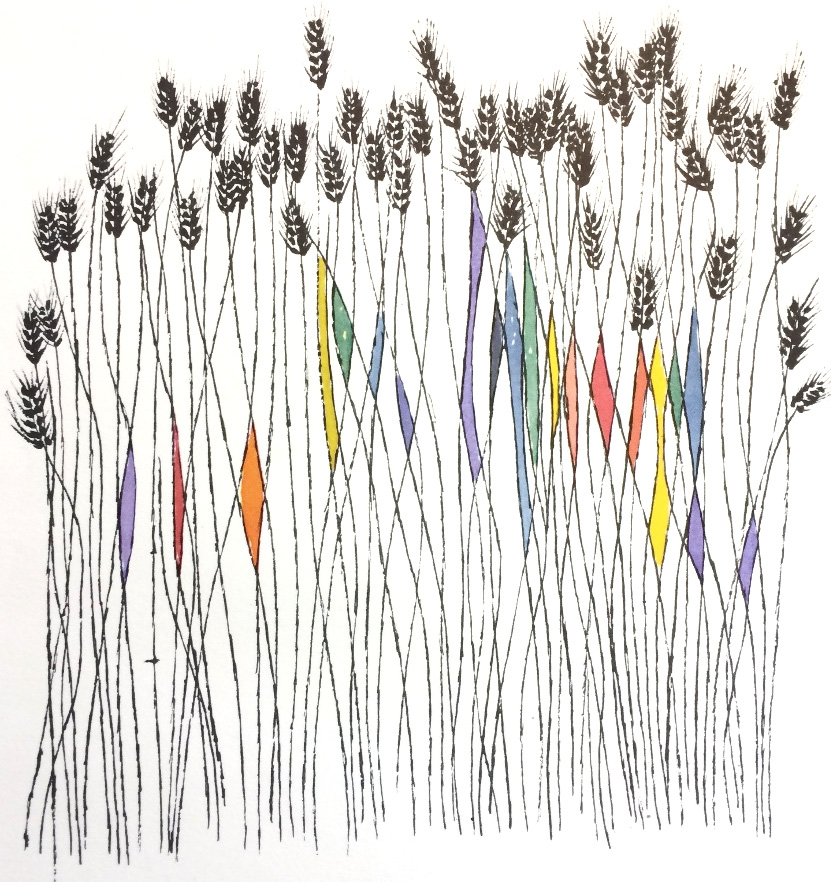
He Is Ever Constant… Ever Present

We arrived in Sweden last October (2018) in the middle of a glorious autumn. As we drove through the countryside we saw brilliant forests of oak, beech and birch with leaves in all shades of yellow, brown and red, and the late afternoon and early evening sunlight made them simply glow. It was breathtaking. Interspersed between the forests we saw the farmers’ fields, many of them dark brown where the soil had been turned over after the harvest, waiting for planting in the spring. Other fields were a deep green from a fall planting of grain, which stood in sharp contrast to the fall colors of the surrounding leaves. Some still held the sugar beets waiting to be harvested. We looked forward to these opportunities to get out of town and observe how the local agriculture functioned.
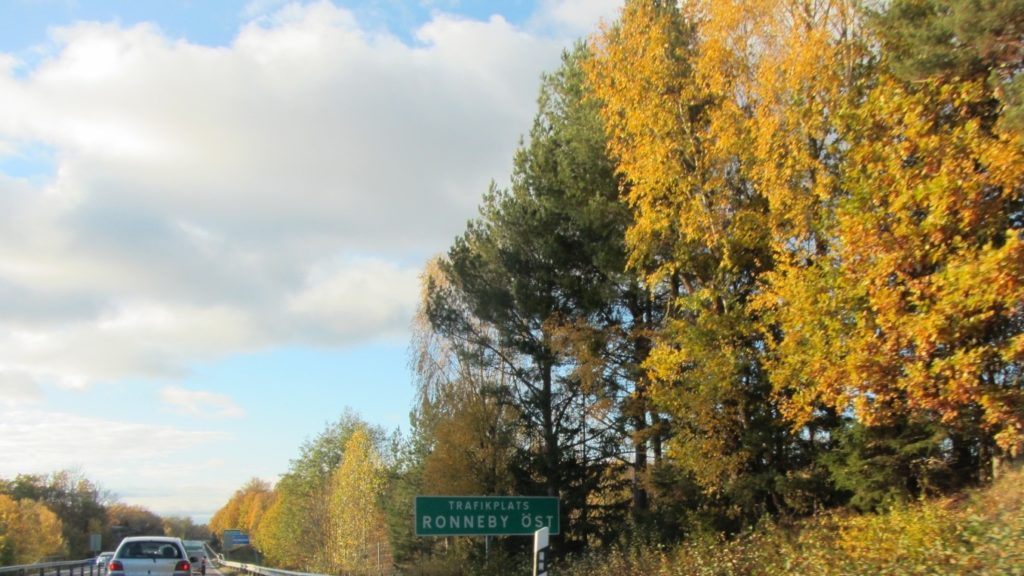
As the days got shorter the leaves began to fall from the trees and the lovely golden colors disappeared, replaced by stark and empty trunks and branches that stood out in contrast to the blue sky. The oaks were especially impressive, thick trunks with twisting limbs and branches that looked tortured as they seemed to randomly change direction. The fields lay fallow and winter came. A very mild one, much to our appreciation. It snowed only a few times, but when it did, the white blanket over everything was beautiful and made the darkness of the season tolerable. We waited anxiously for spring and looked for signs of the days starting to grow longer again.
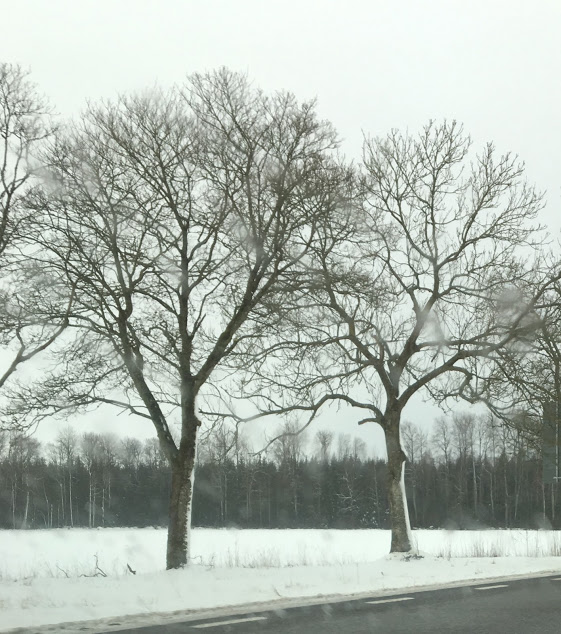
And then we noticed the first hints of spring – as you looked at the birch groves you began to detect the faintest bit of green as the earliest buds opened. Day after day more and more green became apparent and after a few warm days, whole trees took on a green tint. The birches were the first, and the green sheen against the stark white trunks was lovely. Then other trees got in the act and put out their first leaves. Finally the oaks – their leaves in bunches like bouquets at the end of a branch. And the farm fields too began to glow with green, soon taking on the most intense green we have ever seen. Hay fields and grain fields and bean fields and rapeseed fields – between forest and farm, green everywhere that filled your heart and mind with the joy of spring. And quickly the rapeseed fields began to bloom with bright yellow flowers covering the whole field in floral sunshine. Along the roads were wild flowers of every kind, some singly, others in patches of color, blue, red, white, yellow, violet, pink. We saw a sign along the side of the road announcing the annual “Kosläpp”, the releasing of the cows. Cows in the winter in Sweden are generally housed in barns and fed the dry summer hay until the hay fields begin to grow in the spring and the new grass becomes available. The kosläpp event is fun because when the cows are turned out into their summer pasture they literally jump and dance for joy and it is quite a sight.
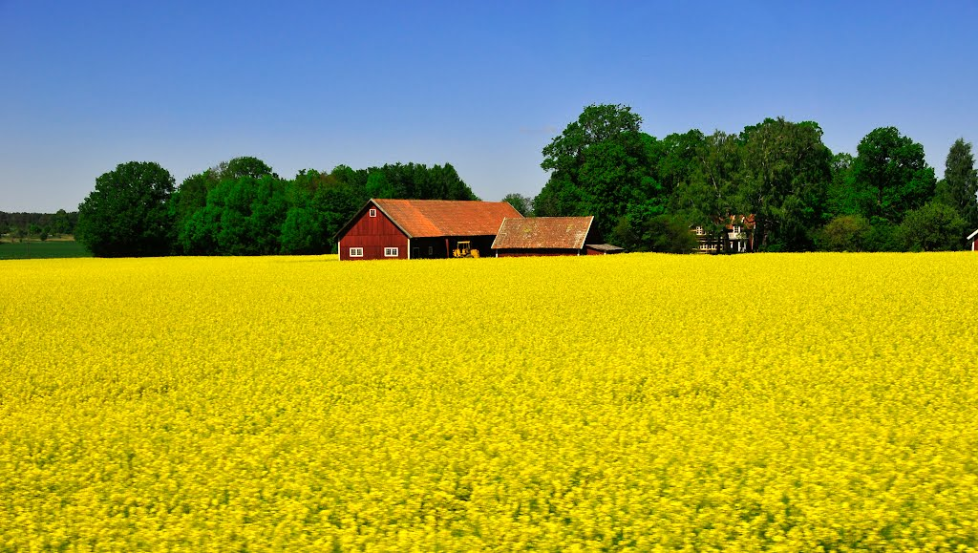
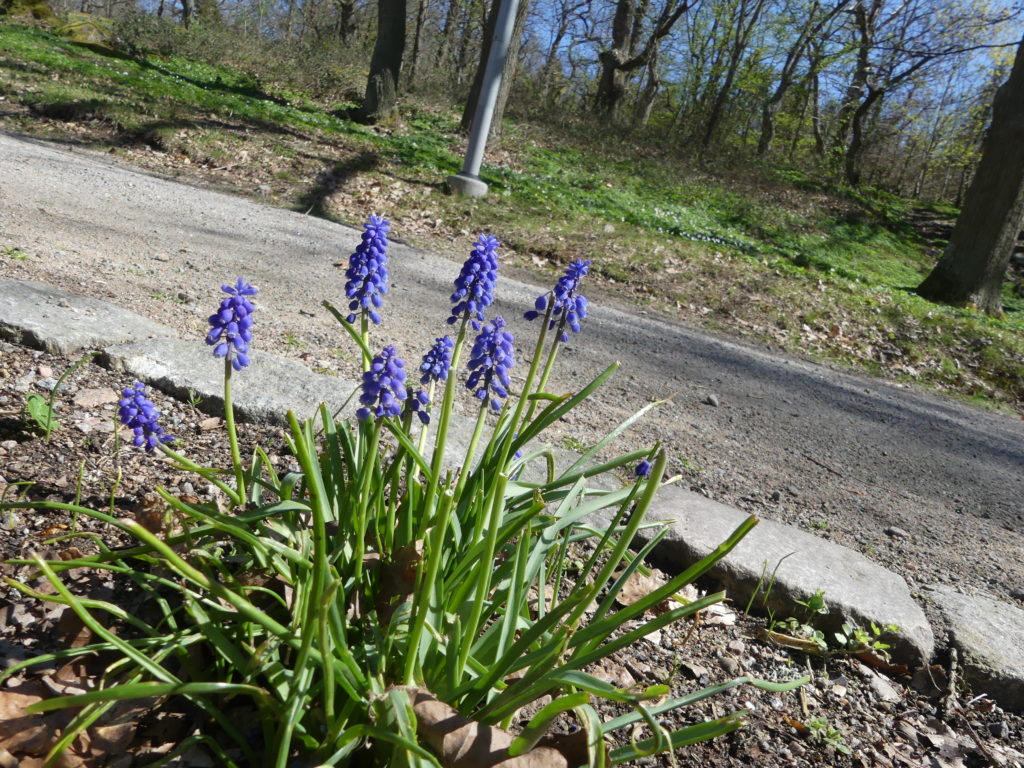
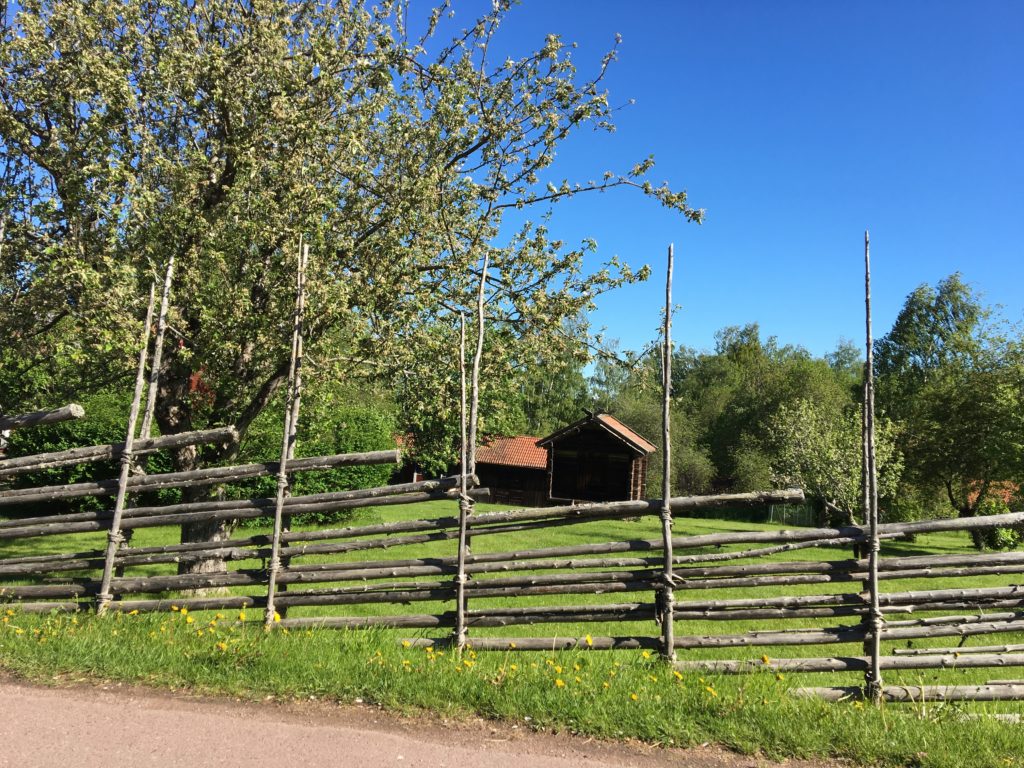
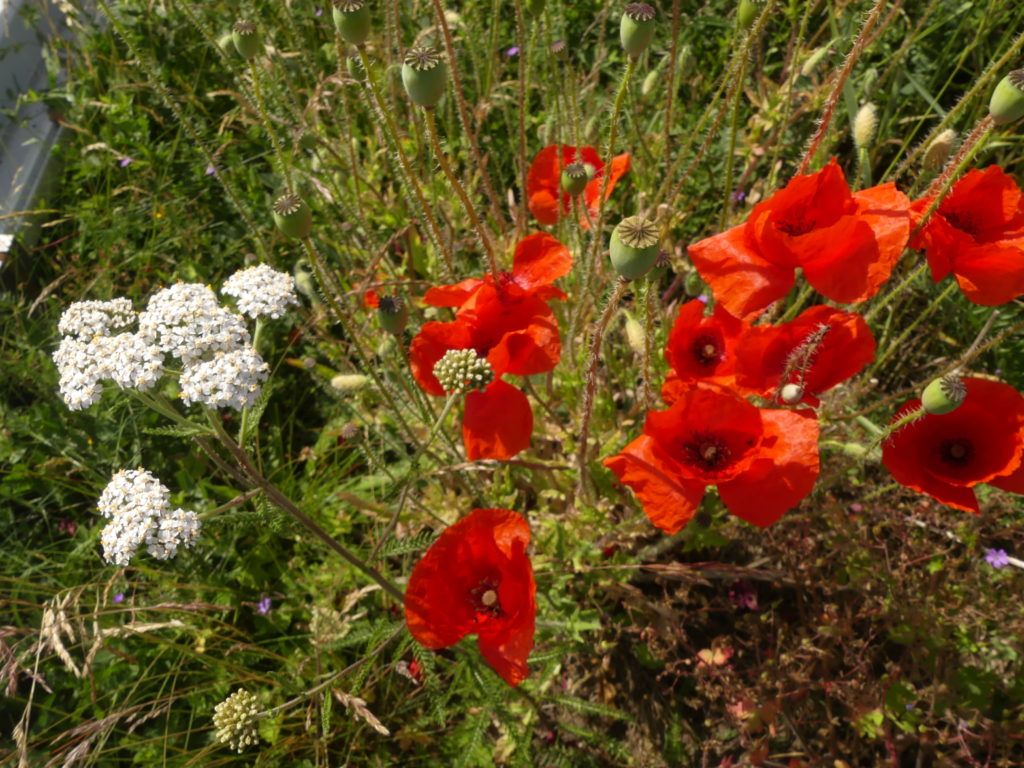
And now it is high summer and all the forests are dense with leaves of green and the fields are ripening in the summer sun. The grain – oats and wheat and rye are turning from the early spring green to the light brown of maturity and will soon be ready for harvest. The bean fields are dusted with white blossoms, the rapeseed has lost its brilliant yellow and is now brown as the oil-rich seeds ripen. The sugar beets continue to absorb the energy of the sun and store it in the sweet roots that will be harvested in their time. And so we have come nearly full circle. As the summer slides into the next autumn we are grateful to be here and to feel the ebb and flow of the seasons and to see this beautiful land that we have loved all our lives without actually being here. Our fondest wishes are being realized and the love we feel for this place is confirmed by the blessings of God as he reveals himself in nature.
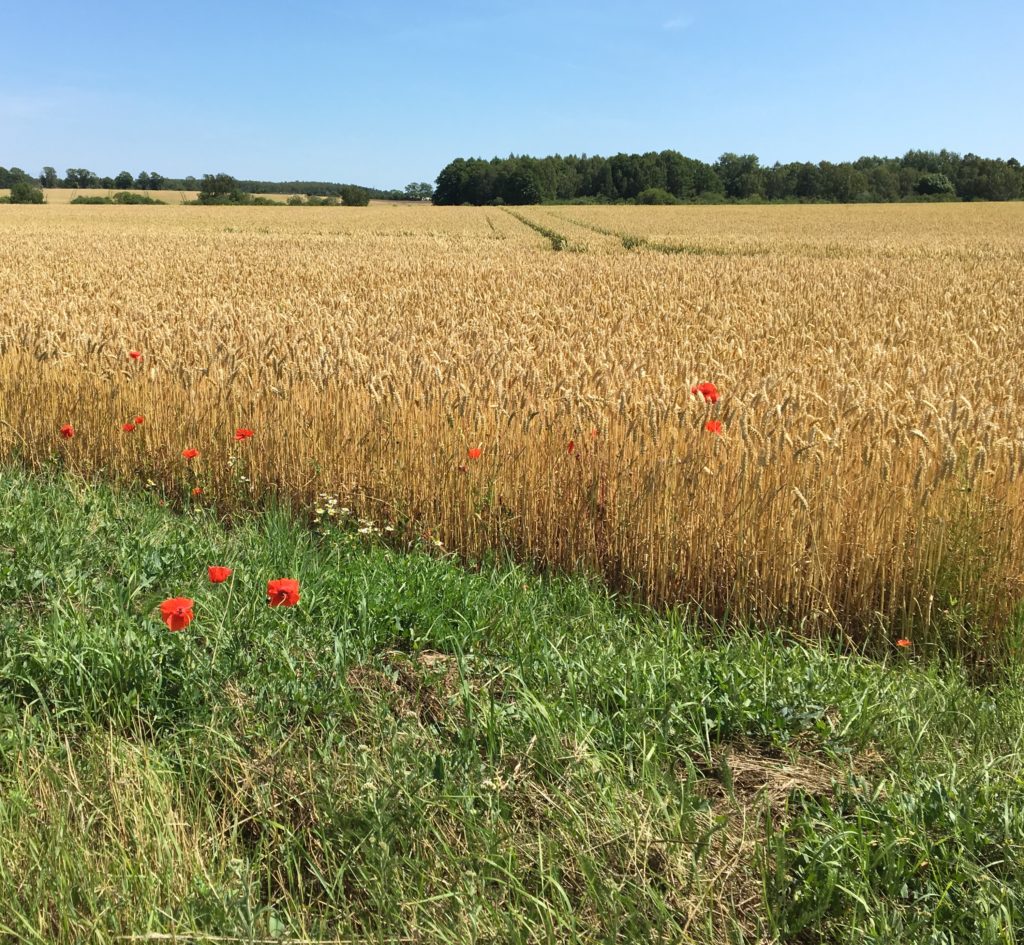
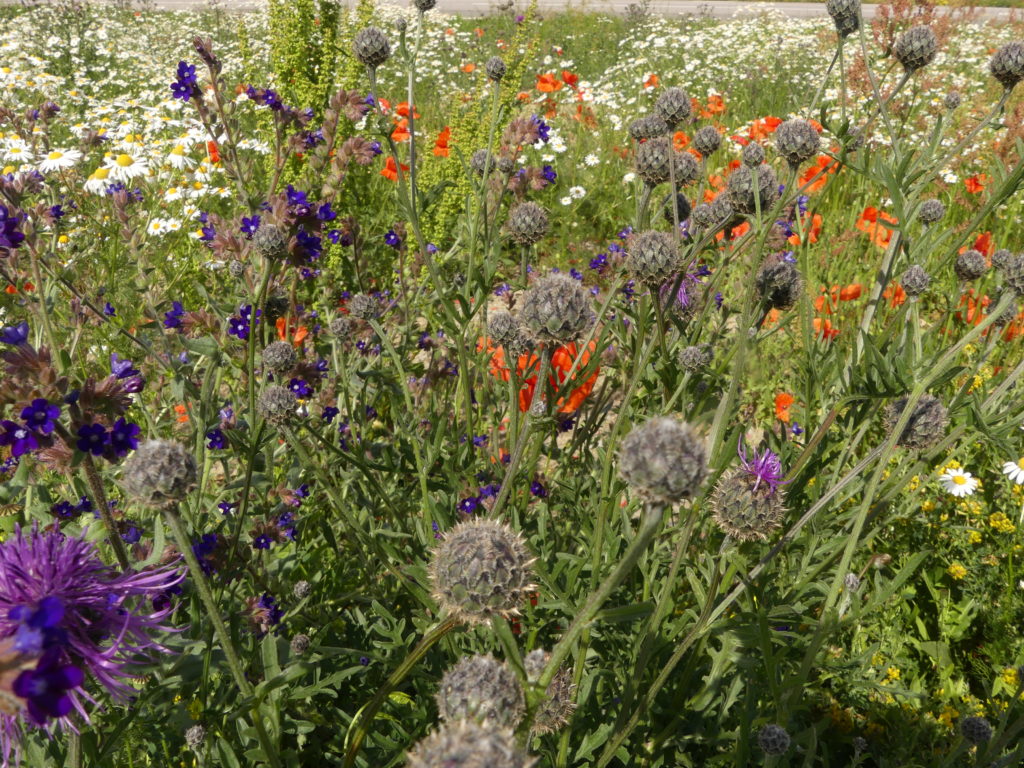
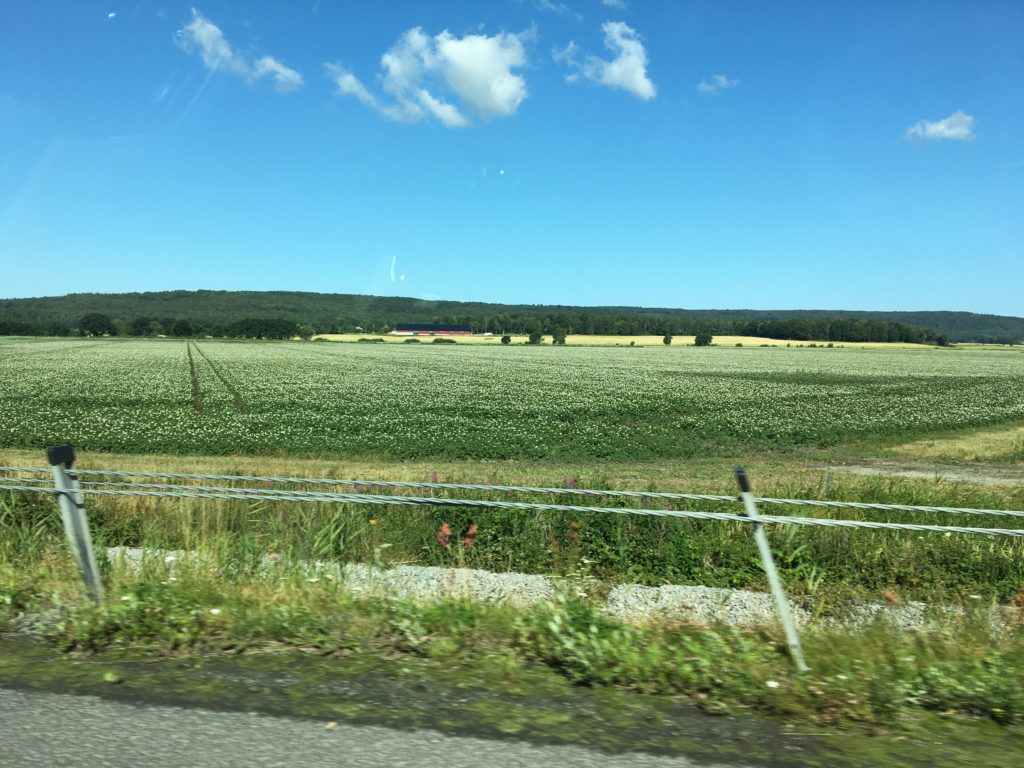


From my favorite illustrator, Carl Larsson of Sweden, who painted these scenes of life on his farm around 1890-1910:
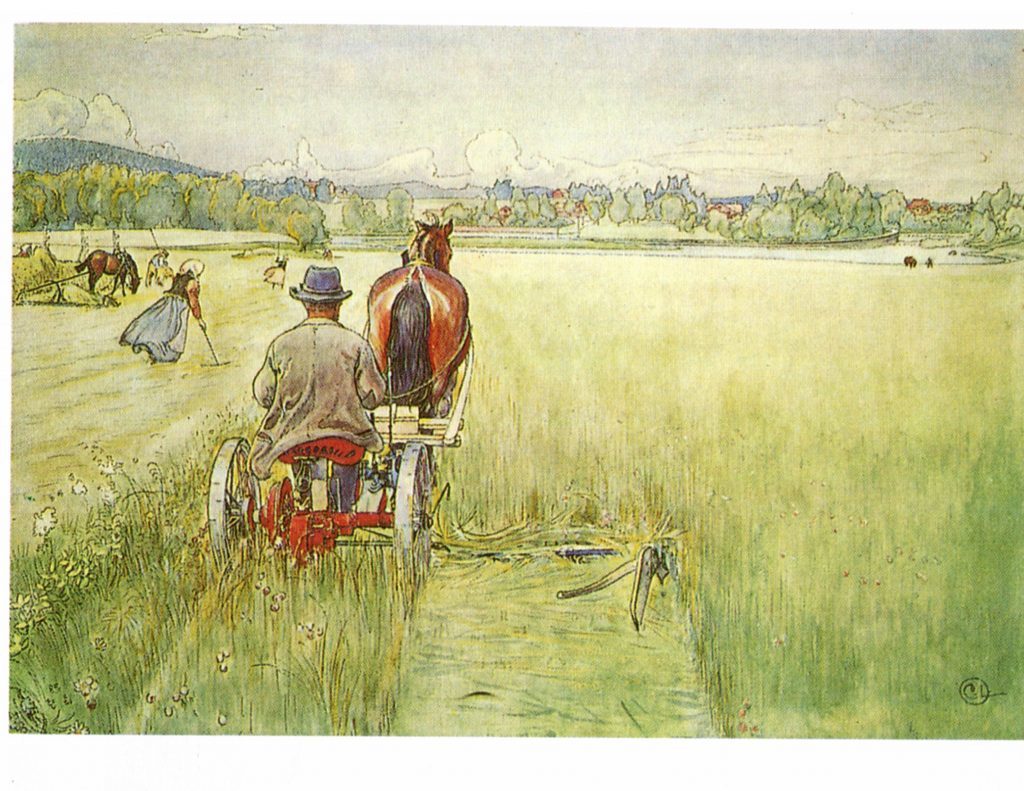
He wrote, that they had just bought this new horse-drawn mowing machine for the wheat, much faster than using a scythe. In Sundborn the first week in July was time to start harvesting.
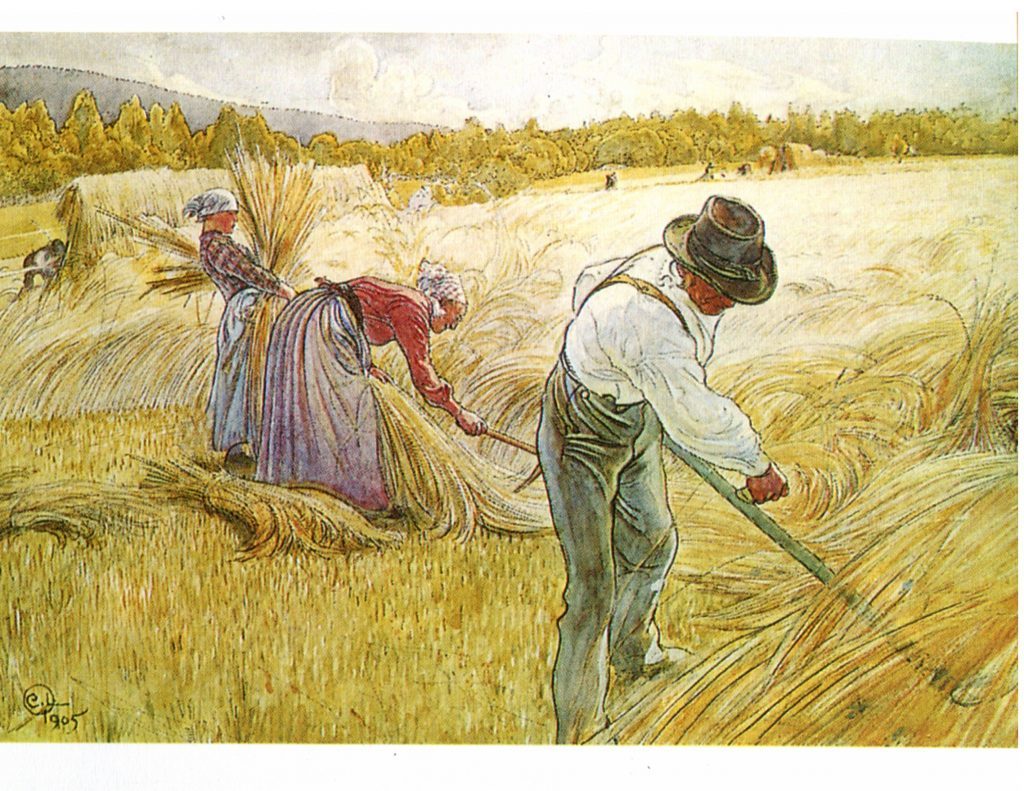
The rye still had to be cut with a scythe because it needed to be bound into sheaves.
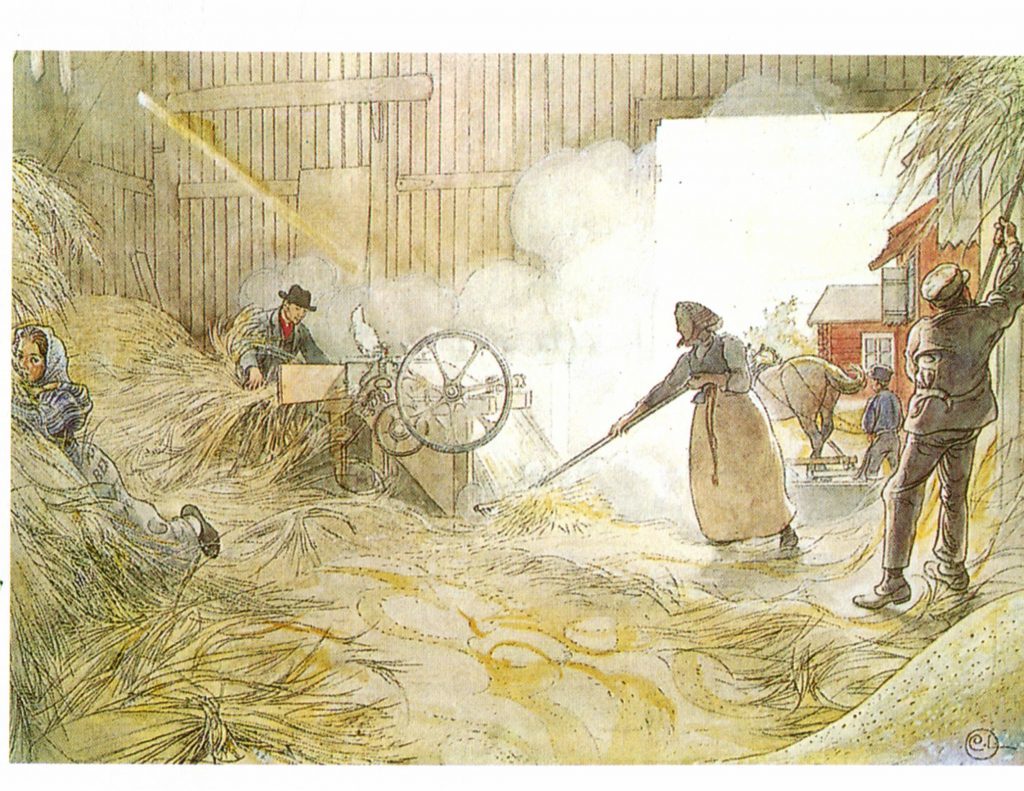
The dusty work of threshing, done later in the autumn. The horse was hitched up outside the barn door and acted as a motor for the threshing machine, by walking around in a circle.
Finally came the winnowing, separating the grain from the chaff – this machine replaced hand threshing. The heavy grain seeds fell near the machine while the lighter chaff floated away.
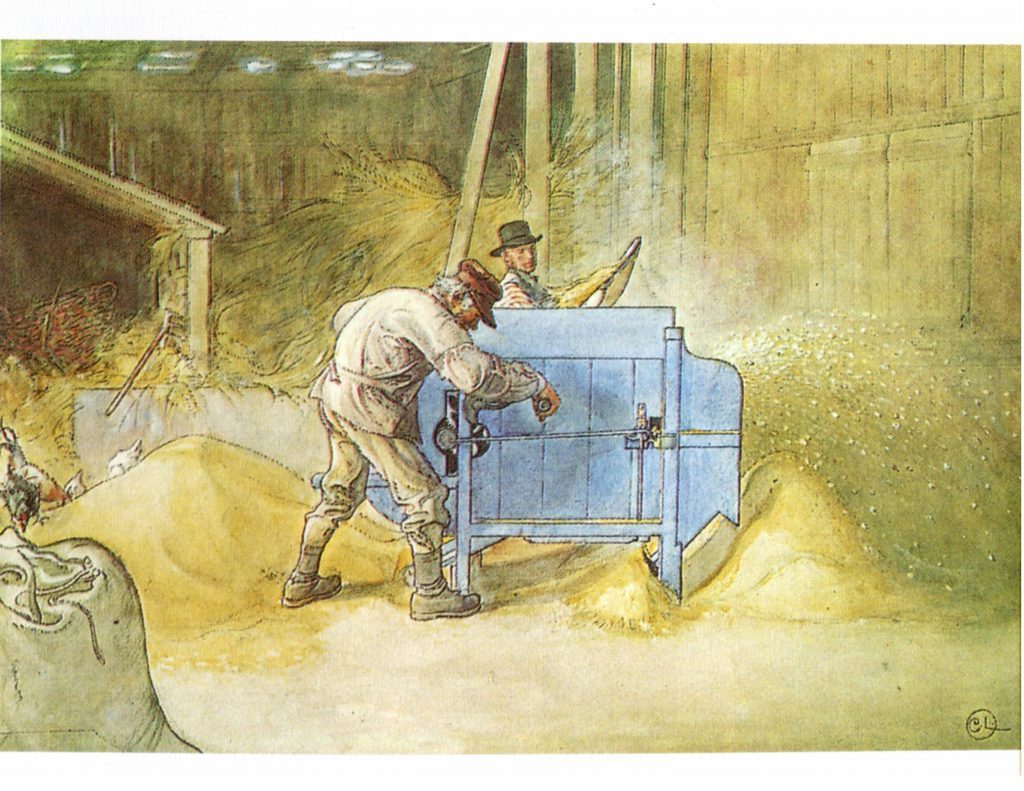

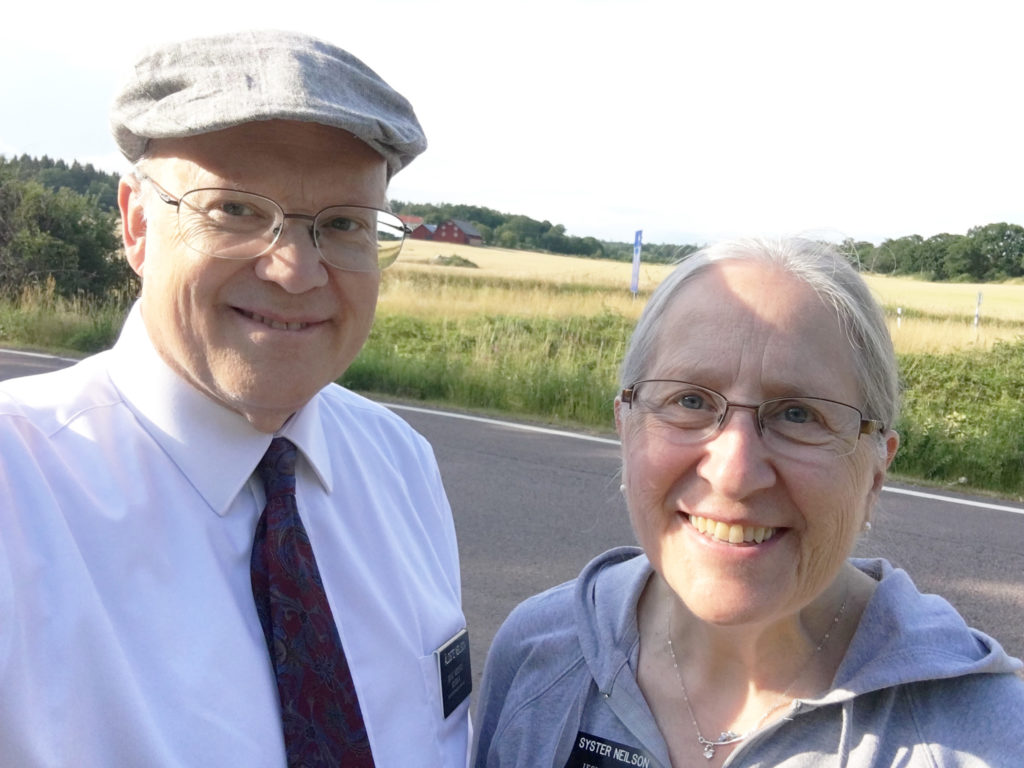
Have hope, be grateful…believe.
